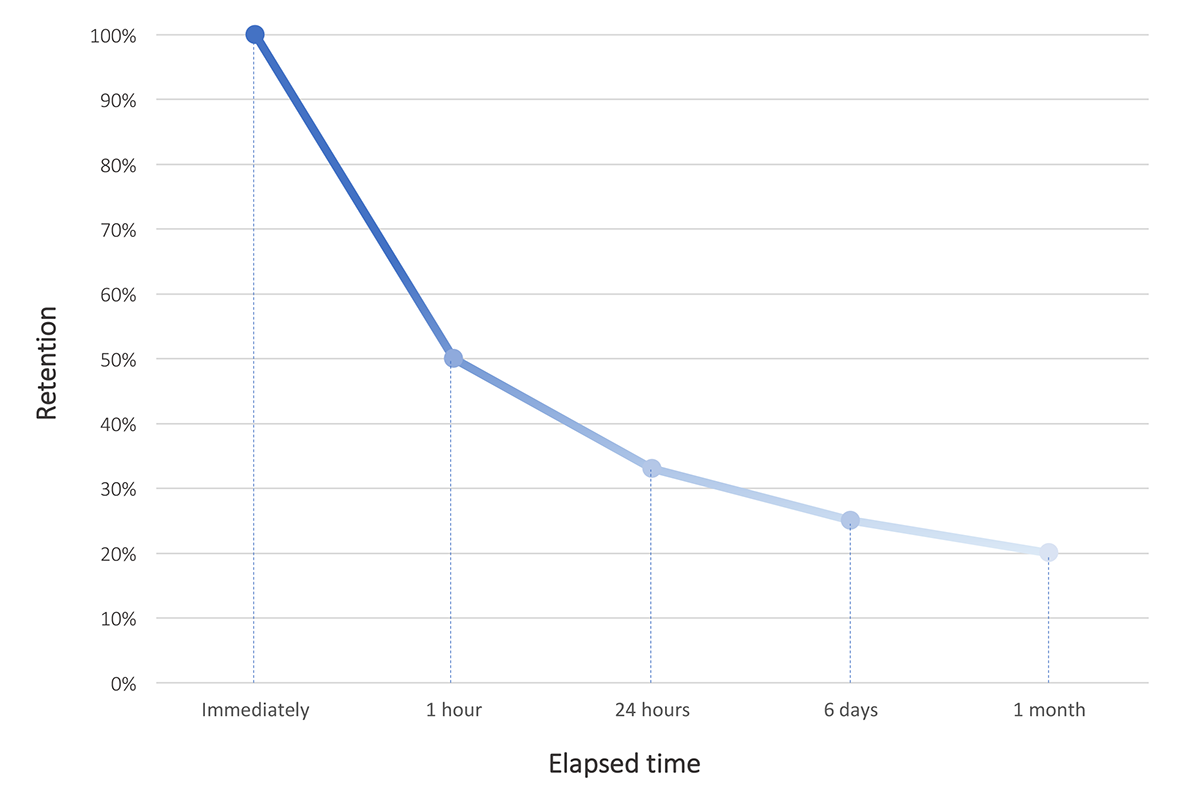Read on for my offer of free individual advice
With hundreds of business communications demanding our attention each week, and thousands of marketing messages every day, we forget most of what we see, hear and read.
Even pictures – said to be worth a thousand words – are sometimes of little value in the long run. And although we remember more of what we hear than what we read, we still forget at an alarming rate.
Our decline in memory is shocking. Psychologists say that just an hour after we learn something new, we’re just as likely to forget it as remember it. After a day, we retain just a third of the information presented, and by the time a month has passed, we might remember a fifth of what we were told.
This ‘forgetting curve’ was revealed in 1885 by Hermann Ebbinghaus, who studied how much information the human brain retains and how much it forgets.

This doesn’t bode well for our communications. If people can’t remember what we say, what’s the point in wasting our time and energy trying to convey a message?
Are you setting yourself up for disappointment?
Senior personnel who know they’re not quite achieving their aims, or want to do better, usually think it’s something to do with the way they deliver messages. Often the root cause is the messages themselves: what they say rather than how they say it.
This never surprises me. Effective messaging isn’t taught in schools, universities or workplaces, and I spend a lot of time teaching clients to work out the best way of achieving buy-in.
The basis of effective messaging
The principle of cutting through the clutter is simple: people remember things which are more important to them.
Research shows that we all evaluate messages based on our own individual beliefs and experiences. If you can frame a message to relate to the personally-important values of your audience it is much more likely to stick. A high quality argument using attitude-relevant information is a powerfully persuasive tool.
When you’re creating your argument (message), the questions to consider are “why should my audience care?” and “what’s in it for them?”
More than two thousand years ago, Aristotle recognised that to make an impact, you have to tap into people’s emotions. Marketing consultant Simon Sinek outlines this well, supporting the theory with some biological science – always a favourite of mine. Although Simon’s spiel is oriented towards sales rather than general persuasion, his points are relevant for all communications. “People don’t buy what you do, they buy why you do it”, he says.
This is so true. If you can dovetail your “why” into your audience’s “what’s in it for me?”, you are well on the way to effective messaging.
How to create effective messaging
Effective messaging is simple, relevant and clearly beneficial to the recipient(s). Its principles are beautifully explained in a great little book called Made to Stick: why some ideas take hold and others come unstuck. This describes why “we have no difficulty at all in remembering the details of, say, a bogus scare story, and yet often struggle to recall information that may be vital to us”. The book takes us through concepts of simplicity, the unexpected, the credible and the emotional, among others. It is well worth a read.
If you can create a well-crafted, sticky message, you will help the recipients of that communication to slide down the persuasion funnel of awareness, interest and consideration, and encourage them to take action… until BANG! You’ll have them in the palm of your hand, following your suggestion.
But don’t take my written word for this. I’m up for a challenge if you are. If you’re a UK-based business leader reading this in April or May 2017, and you’d like to assess your skills in this area (totally gratis, no strings attached), send me a message, tell me who it’s for, give me a little background, and I’ll let you know how it reads and what chance it stands of achieving its aims.



